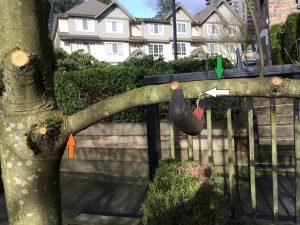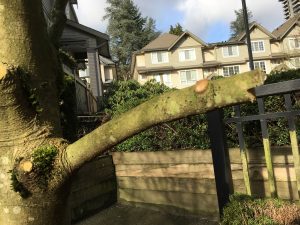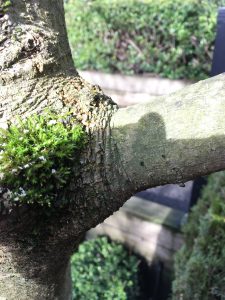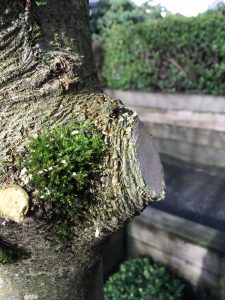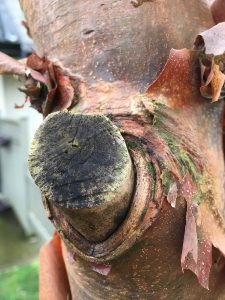There are many key landscape maintenance techniques all landscapers should know well. I try to teach these techniques to our new company recruits; and home owners can benefit as well from knowing them. Trees are an important component of our landscapes and must be maintained properly.
Three point cuts
This is a basic technique all landscapers must know. ISA certification is not required, although I always recommend it to workers with 2-3 years of field experience. This 3-point cut technique does appear in the Certified Landscape Technician practical testing module on pruning. However, you just have to tell the judge how you would make the 3-point cut because they use one tree to test all candidates.
For now, let’s stick to basics.
Yesterday I was at a site doing normal winter maintenance. I finessed beds, blew leafy piles and then I ran into Magnolia trees that were clearly encroaching on a staircase. So I took action because I had time for it and I also enjoy the work.
To remove an unwanted branch, you must use a 3-point cut, unless you’re removing a smaller branch that could almost be taken off with hand snips. Why 3 point? Because first you have to take off the weight of the branch. If you don’t you risk bark damage.
(1) Undercut (White arrow)
Make a decent undercut without getting your sharp hand saw pinched by the wood.
(2) Second cut (Green arrow) to take the weight off. See how cleanly the branch shears off. If you attempt to make just one cut at the branch collar (Orange arrow) you risk ripping off the bark.
(3) The final cut happens at the branch collar (Orange arrow). We give the tree a chance to cover up the wound. Just make sure you don’t cut into the branch collar.
The problem with stubs
Leaving a stub means the tree can’t properly heal the wound by closing it over. The stub dies anyway but it could allow diseases to enter the tree. So make proper cuts without leaving stubs.
This cut was poorly done. The stub is clearly dead and you can see how the tree tried to cover up the wound. You wouldn’t believe how many of these cuts I see in the field. Sometimes the dead stub just breaks off.
Once you learn the 3-point cut, it will become automatic with practice.


